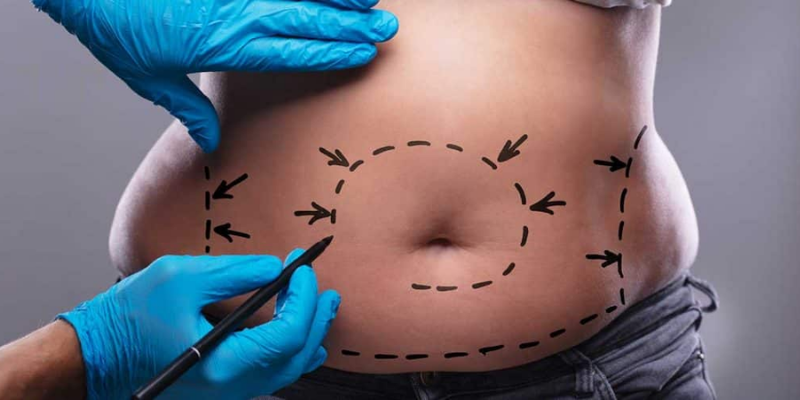Stomach Surgery For Weight Loss
Stomach surgery for weight loss, or tube stomach surgery, is one of the most often done surgical operations in the world, even though it is commonly referred to as stomach reduction surgery. Duedonal Switch surgery, which was originally performed in 1988 as a component of the gastric sleeve gastrectomy, was first performed closed 11 years later, another medical first. Within two years of the first sleeve gastrectomy being done, it began to be utilized as a preoperative procedure for patients undergoing gastric bypass surgery who were very overweight.
Surgeons have been performing gastric sleeve surgery as a standalone operation since 2009. In sleeve gastrectomy surgery, the true breakthrough was accomplished when the laparoscopic surgical approach was first used. Surgical scarring and post-operative hospitalization time have both been reduced as a result of the usage of this technique. The popularity of sleeve gastrectomy surgery has skyrocketed as a result of this predicament.
Laparoscopic sleeve gastrectomy surgery involves transforming a patient’s stomach into a small, slender tube. After the cutting operation, around 80% of the stomach is gone. Consequently, the stomach’s nutritional requirements are greatly reduce, but your hunger also drops at the same pace. Insulin resistance has also been compromise. By securing the stomach’s input and exit, the surgery prevents any interruptions to the digestive system. Because of this, stomach reduction surgery has a very low risk.
Patients usually inquire as to how the sleeve gastrectomy procedure is carry out. Patients who successfully navigate this stage are more likely to recover quickly. Nowadays, gastric sleeve surgery is quite frequent. The emergence of new technology is one factor contributing to this.
Stomach Surgery For Weight Loss Process
The topic of how to carry out gastric sleeve surgery may now answer more clearly thanks to this new technology. The first thing people want to know from their physicians is how much weight they can expect to lose after a sleeve gastrectomy. During the first five years after sleeve gastrectomy surgery, individuals might lose a significant amount of weight. When it comes to weight reduction and malabsorption, sleeve gastrectomy surgery is just as successful as gastric bypass. As a result, post-surgery vitamin and mineral supplementation is a need. Gastric bypass is the latest surgical procedure utilize if gastric reduction surgery loses its effectiveness over time.
Regaining weight following sleeve gastrectomyis common, with studies estimating that around 15% of patients do so. Keeping a close eye on a patient who has weight-loss surgery is critical. A team of psychologists and nutritionists monitors patients who have had gastric reduction surgery. This strategy is aim at preventing variables that may lead to weight increase or health problems for the patient. Patients who have sleeve gastrectomy surgery are need to exercise extreme caution when it comes to their diet.
Stomach Surgery For Weight Loss Review
Until the stomach structure of patients recovering after gastric sleeve surgery, nourishment should continue as a liquid. The procedure of acclimating the patient to the new stomach capacity is calling as liquid feeding. Patients may be fed by a nasogastric tube (nasal feeding) even though it takes approximately a month for them to become acclimate to the new ide process. Even though individuals’ transitions to solid meals may be different, it normally takes two months or more. Solid food may introduce to patients in their third or fourth month of treatment, depending on the patient’s tolerance for stomach capacity and the stomach’s recuperation progress.
The stomach’s capacity is decrease after gastric sleeve surgery, but its functions remain same. As a result, a large number of food categories are reducing in consumption. The hormone Ghrelin, responsible for the sensation of hunger, is largely remove as a consequence of the stomach wall being excise to a degree of roughly 75%. Patients often consider the advantages of sleeve gastrectomy surgery in addition to the procedure itself.
It is important for patients to follow the doctor’s instructions on how to care for minor scarring after surgery, as well as to take prescribed antibiotics on a regular basis to prevent infection. It is important to note that antibiotics protect the patient against both hospital-acquired and non-hospital-acquired illnesses. Gastric protector medications need special consideration. Another important aspect of the sleeve gastrectomy procedure is how well the patients recuperate after the operation.
Stomach Surgery For Weight Loss Result
A gastric sleeve gastrectomy procedure comes with its own set of dangers, both during and after the procedure. Bleeding and infection in the patient are the most significant dangers of this procedure. Those who are qualifying for tube stomach surgery, a form of obesity treatment, are referring to as candidates. It is important for patients to pay special attention to nutrition and follow their doctor’s prescribed diet after undergoing surgery that removes 80 percent of the stomach.
The tests using to determine whether or not a patient is a candidate for sleeve gastrectomy surgery are quite sensitive, and various approaches are utilize for those who are not. However, surgery is not indicate for people with high blood pressure or diabetes. Patients who are contemplating a sleeve gastrectomy also think about the potential dangers of the procedure.
It’s well knowledge that laparoscopic surgery is using to execute sleeve gastrectomy. To begin with, the stomach is slice into a long, thin tube in a laparoscopic sleeve procedure. After the cutting operation, around 80% of the stomach is finish. People who have sleeve gastrectomy surgery have substantially fewer dietary requirements than they did in the past, and their appetites will also diminish as a result. Insulin resistance has also been compromising. By securing the stomach’s input and exit, the surgery prevents any interruptions to the digestive system. Since gastric sleeve surgery has very minimal risk.
Obesity surgery in which the stomach is reshape into a long tube like a banana with the purpose of reducing food intake. Closed procedure removes 80 percent of the stomach laparoscopically. Thus, even if meal absorption is little, it is hope that the individual would develop the habit of consuming less calories as a result of this method.
What Are the Long-Term Side Effects of Gastric Sleeve for Elderly People?
As people age, it is vital to be aware of potential long-term side effects associated with any medical procedure. Gastric sleeve surgery, also known as sleeve gastrectomy, is a popular weight-loss procedure that has become increasingly common in recent years. While this procedure can benefit many people, getting an answer to “what are the long term side effects of the gastric sleeve for elderly people?” is needed. The most common long-term side effects of the gastric sleeve surgery for older adults include nutritional deficiencies, acid reflux, and dumping syndrome. Nutritional deficiencies can occur when patients cannot consume enough calories or nutrients due to their smaller stomach size; as a short summary of “what is gastric sleeve surgery?”

On the other hand, dumping syndrome is a condition in which food moves too quickly from the stomach into the small intestine, leading to nausea, abdominal cramping, and diarrhea. Adjusting to a smaller stomach size can be difficult and may lead to depression or anxiety. Patients may also struggle with body image issues as they adjust to their new weight and appearance. Discuss “what are the long term side effects of the gastric sleeve for elderly people?” with a doctor before deciding whether or not to undergo the procedure.



